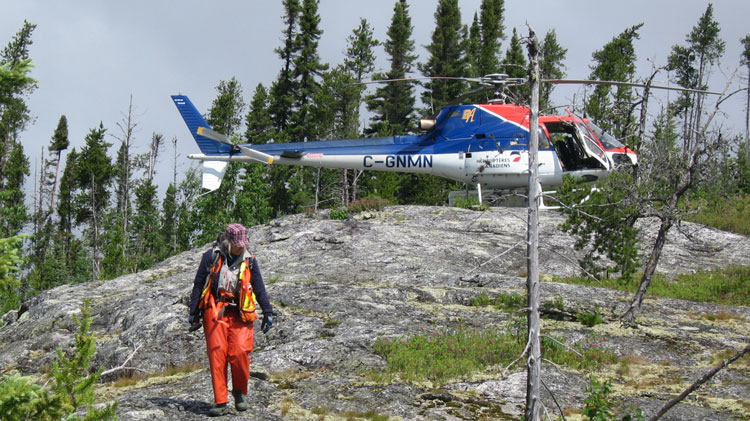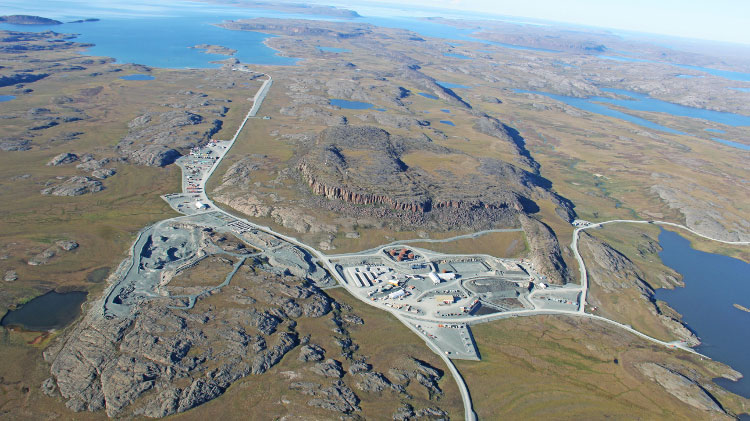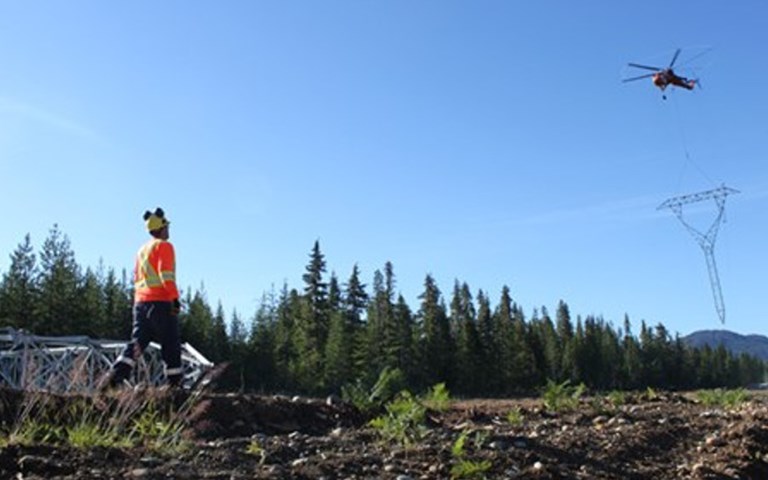British Columbia’s Northwest Transmission Line will make many mining projects more economically feasible and connect remote communities to the grid | Courtesy of BC Hydro
Imagine installing 1,100 steel towers along a 344-kilometre line through the rugged mountains of northwestern British Columbia, and you have an idea of the challenges associated with construction of the Northwest Transmission Line (NTL). But that has not stopped BC Hydro, which expects its new 287-kilovolt transmission line to be in service this spring.
Flipping the switch on the long-awaited NTL will be a transformative event for local communities and resource projects, as diesel is still used to generate electricity in much of B.C.’s northwest. BC Hydro’s high-voltage transmission grid previously extended only as far north as Meziadin Junction, with a circuit running west to the coastal community of Stewart. The new line starts at the Skeena Substation near Terrace and continues north to end at a new substation near Bob Quinn Lake on Highway 37. A related venture, the 93-km Iskut Extension from Bob Quinn to Tatogga, is being constructed by Imperial Metals to support the development of its Red Chris copper-gold mine.
Along with providing reliable low-cost power to the remote region, the NTL is expected to serve as an “interconnection point” between resource end-users (such as Imperial’s Red Chris) and independent power-generation projects, like several run-of-river hydro projects being built by AltaGas to feed power into the line.
Threading a needle
Although the project provides the prospect of new infrastructure and economic development in the region, it has also triggered opposition from various groups over the years. “Concerns were expressed and rightfully so,” says NTL project manager Tim Jennings. “But a lot of consultation went on over a wide range of issues and that has [since] translated into very positive broad support for the project.”
Jennings says the remoteness and environmental sensitivity of the region made site selection for the line an important priority from the onset. The line crosses the Nisga’a Memorial Lava Bed Park, Highway 37, the Skeena River and many smaller watercourses, steep mountain slopes prone to avalanches and sensitive wildlife habitat.
Jennings compares the exercise of finding the best route to “threading a needle” through a topographical maze. “The alignment that we took sets the line back from the highway, which posed challenges in terms of putting in construction access roads,” he says.
To access and clear the NTL right of way (ROW), crews had to improve roughly 300 km of existing roads and build around 200 km of new roads. Helicopters were used to install many of the transmission structures along the 344-km-long line route. Transporting steel from central fly yards was no small feat as each of the guyed Y-lattice towers weighs 95 tonnes and averages 27 metres in height. The combined height of the towers is roughly equivalent to 78 Empire State Buildings. Currently, crews are tasked with stringing 2,100 km of conductor cables in the final push for the May 2014 completion.
BC Hydro had not built a project of this scope in a remote area for some time and awarded the design-build contract to Valard Construction and Missouri-based Burns & McDonnell, which both have extensive experience in electrical transmission and distribution. Burns & McDonnell engineered the line while Alberta-based Valard handled the construction using much of its own labour and equipment.
Valard President Adam Budzinski says the firm got its start in 1978 by building small rural power lines and became one of Canada’s leading power line builders through organic growth. “The NTL isn’t our longest project, but has been one of the most challenging,” Budzinski points out. “Part of it is the tough topography and extreme weather in this part of the world. Every valley is different and has its own microclimate.”
Another challenge is logistics, Budzinski adds, because equipment must first be brought into Terrace, the largest community servicing the region: “From there it’s more than 300 kilometres to the end of the project with no large communities along the way. It’s all about preparation and execution.”
The NTL budget has far surpassed the initial planning level estimate of $400 million and is expected to top $736 million when the final bills are tallied. The federal government’s Green Infrastructure Fund covered $130 million of the total.
BC Hydro attributes the increased costs to higher-than-anticipated ROW clearing costs, fish and wildlife habitat compensation and mitigation costs, re-routing the line to avoid important salmon spawning creeks and negotiating and signing impact and benefit agreements (IBAs) with Nisga’a Nation and with eight First Nations along the power route, which, in some cases, included contracts for ROW clearing and access road construction. BC Hydro has not disclosed the IBA costs, but Bruce Barrett, BC Hydro vice-president, has publicly described them as “unprecedented.”
The NTL project has created an estimated 280 direct jobs per year of construction, but it faced intense competition for skilled personnel and costs pressures for equipment because of several large-scale projects in the region, notably Rio Tinto Alcan’s $3.3-billion modernization of its aluminum smelter complex at Kitimat.
Time pressures weighed in as well, as BC Hydro had to meet contractual obligations with its first two customers: Imperial Metals and AltaGas. This meant working through the past few winters in a region known for getting a lot of snow and prolonged cold spells.
A new mining era
Northwestern B.C. hosts many undeveloped mineral deposits, including the Galore Creek copper-gold-silver project put on hold years ago because of high costs, but all eyes are on Imperial Metals to lead the way and bring on its new mine on time despite brutal capital markets.
Steve Robertson, Imperial Metals’ vice-president of corporate affairs, says the company will finance Red Chris through debt rather than equity and with cash flow from its other operations: the wholly owned Mount Polley (copper-gold), the 50-per-cent-owned Huckleberry (copper-molybdenum) mines in central B.C., and the Sterling gold mine in Nevada.
“The schedule for Red Chris is unchanged,” Robertson says. “Our schedule has always been driven by the goal of hooking up with the NTL and starting to commission as soon as the NTL is energized.”
Red Chris will be an open-pit mine and 30,000-tonne-per-day flotation mill with a projected 28-year life. As for the Iskut Extension, Imperial received permits to construct the line in mid-July 2013, and began clearing within 24 hours, Robertson says. The line’s budget is included as part of the overall $550 million in capital costs for Red Chris. Imperial Metals’ power unit will receive $52 million for the line when it is turned over to BC Hydro.
“The NTL is absolutely critical to the development of Red Chris,” Robertson emphasizes. “The lack of grid power is probably the main reason why this project had not been developed earlier.”
Indeed, the lack of power and infrastructure is the main reason why many other projects remain undeveloped in the region, despite the efforts of some of the world’s biggest names in mining over the past century. That dynamic is expected to change given the number of projects for which the NTL is considered essential to development. In addition to Red Chris, the list includes Galore Creek (NovaGold and Teck), Schaft Creek (Copper Fox Metals), Brucejack (Pretium Resources), and KSM (Seabridge Gold) among others, plus hundreds of early-stage exploration projects.
“The Northwest Transmission Line represents a major milestone toward developing the infrastructure required for the advancement of many mining projects in B.C.’s northwest, which will ultimately lead to hundreds of new jobs and significant capital investment in the area,” says Karina Brino, president and CEO of the Mining Association of British Columbia. “This important new line will provide a reliable source of power, not just to the developments in the area but also to the communities in which they operate.”




